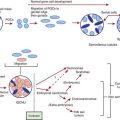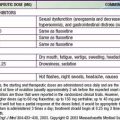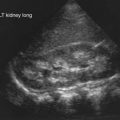Chapter 572 Primary Aldosteronism
Etiology
Aldosterone-secreting adenomas are unilateral and have been reported in children as young as  yr of age; they mainly affect girls. Bilateral micronodular adrenocortical hyperplasia tends to occur in older children and is more frequent in males. Primary aldosteronism due to unilateral adrenal hyperplasia may also occur. Glucocorticoid-suppressible hyperaldosteronism is discussed in Chapter 570.
yr of age; they mainly affect girls. Bilateral micronodular adrenocortical hyperplasia tends to occur in older children and is more frequent in males. Primary aldosteronism due to unilateral adrenal hyperplasia may also occur. Glucocorticoid-suppressible hyperaldosteronism is discussed in Chapter 570.
Differential Diagnosis
Primary aldosteronism should be distinguished from glucocorticoid-suppressible hyperaldosteronism (Chapter 570.8), which is specifically treated with glucocorticoids. An autosomal dominant pattern of inheritance should raise suspicion for the latter disorder. Glucocorticoid-suppressible hyperaldosteronism is diagnosed by dexamethasone suppression tests or by specific genetic testing. More generally, primary aldosteronism should be distinguished from other forms of hypertension by means of the testing previously discussed.
Funder JW, Carey RM, Fardella C, et al. Case detection, diagnosis, and treatment of patients with primary aldosteronism: an endocrine society clinical practice guideline. J Clin Endocrinol Metab. 2008;93:3266-3281.
Geller DS, Zhang J, Wisgerhof MV, et al. A novel form of human mendelian hypertension featuring nonglucocorticoid-remediable aldosteronism. J Clin Endocrinol Metab. 2008;93:3117-3123.
Mattsson C, Young WFJr. Primary aldosteronism: diagnostic and treatment strategies. Nat Clin Pract Nephrol. 2006;2:198-208.
Stowasser M, Gordon RD. Primary aldosteronism—careful investigation is essential and rewarding. Mol Cell Endocrinol. 2004;217:33-39.
Sukor N, Mulatero P, Gordon RD, et al. Further evidence for linkage of familial hyperaldosteronism type II at chromosome 7p22 in Italian as well as Australian and South American families. J Hypertens. 2008;26:1577-1582.







